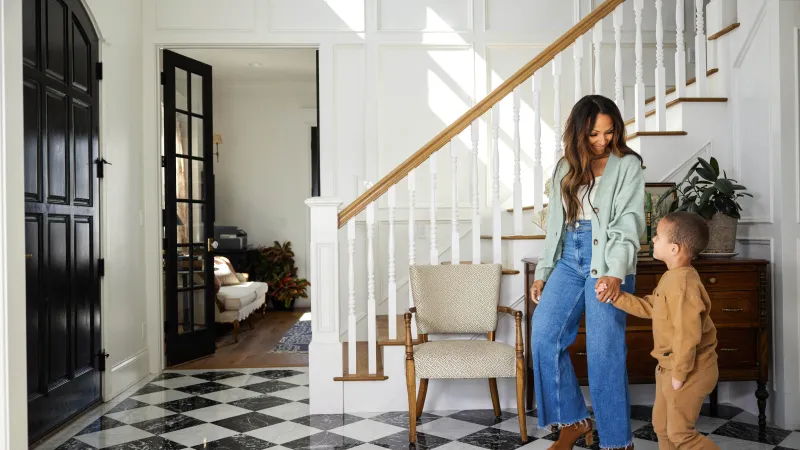The Signs and Causes of Carpet Beetles
Like dust mites, carpet beetles love are a common household pest. They infest carpets, bedding, upholstered furniture, and clothes, eating them and laying eggs in them, which makes it more challenging to get rid of them.
These pests also love breeding in isolated places such as house corners, chimneys, air ducts, and underneath carpets and furniture.
Vacuum and steam clean the carpets, and hire a pest control specialist to get rid of carpet beetles.
If you're wondering what carpet beetles are, what they look like, what causes carpet beetles, and how to find the source of carpet beetles, this article is for you. Let's dive in.
What Are Carpet Beetles?
Carpet beetles vary in color depending on their level of maturity and species. They're oval-shaped and approximately ⅛ inches long. They lay their eggs in carpeting and other fibrous material to ensure their offspring have enough to eat.
Young beetles and larvae feed on pet hair, leather, and natural fibers like wool and silk. Adult carpet beetles feed on flowers, pollen, and plants.
What Do Carpet Beetles Look Like?
Carpet beetles vary based on their species. The common species in the United States include:
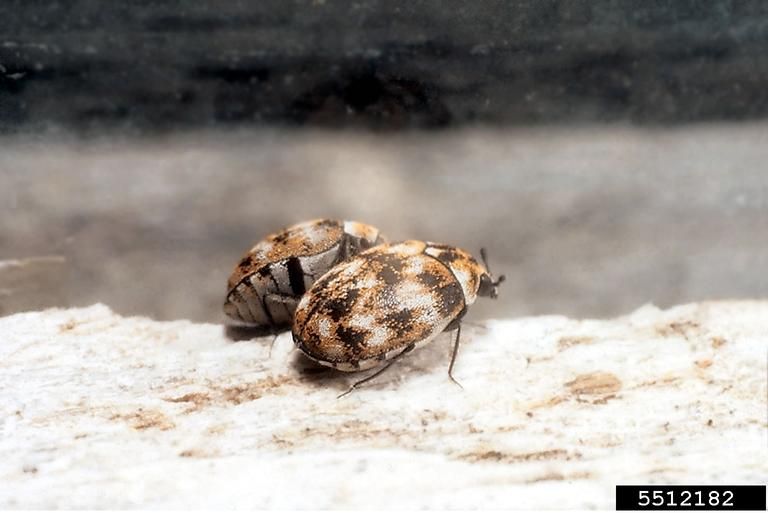
The Varied Carpet Beetle
The Varied Carpet Beetle (Anthrenus verbasci) variety eats fabric and other fibrous material and dead insects. Adults are approximately 2 to 3 mm long, and they have a splotchy appearance because their back and the elytra have yellow, white, and brown colors.
Their larvae are approximately 4 to 5 mm long. Their body has a bristly tuft of hair.
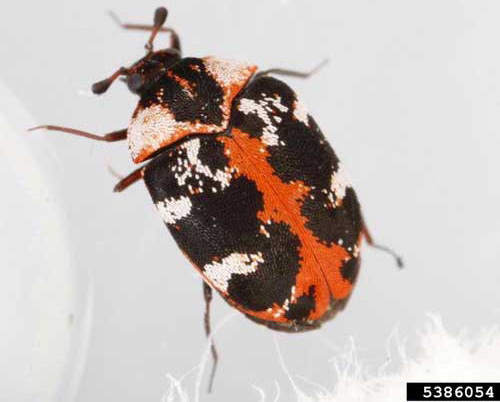
Buffalo Carpet Beetle (Common Carpet Beetle)
The Buffalo Carpet Beetle (Anthrenus scrophulariae) is also called the common carpet beetle. It feeds on animal by-products.
The adults are about 2.5 to 3.8 mm long, and the larvae are about 2.5 to 5 mm long.
The adults' thoraxes and elytra have white and black scales patterned in orange and red. The scales run down the thoraxes' midline.
The larvae are reddish-brown. They're covered in fine, bristled hairs.
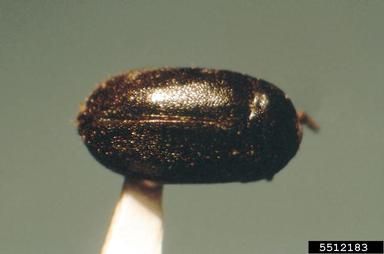
The Black Carpet Beetle
The Black Carpet Beetle (Attagenus unicolor) variety has a bullet shape and feeds on stored products and fabric. It may be black or dark brown with brown antennae and legs.
The black carpet beetle larvae are covered in golden brown hair, have a carrot shape, and grow to about ½ inches long.
What Do Carpet Beetles Eat?
The adult carpet beetle food source includes flowers, seeds, and plants. Carpet beetles prefer laying their eggs where there is enough food source. It can be indoor or outdoor.
Larvae's food includes silk, animal fur, leather, wool, and clothes, so they will only lay their eggs in these areas.
Suppose your carpet and other areas are neglected. Carpet beetles may lay their eggs there, thrive, and probably damage your carpets, upholstery, chairs, and clothes, among other things.
What Is the Cause of Carpet Beetles?
The main cause of carpet beetles is typically their attraction to certain materials, such as wool, fur, feathers, and other organic matter. They are particularly drawn to dark, secluded areas where they can find these materials to feed on and lay their eggs.
Some common causes or factors that can contribute to carpet beetle infestations include:
Poor sanitation: Accumulation of dust, hair, and other debris can provide a food source for carpet beetle larvae.
Presence of suitable materials: Items such as wool carpets, clothing made from natural fibers, upholstered furniture, and stored food items can attract carpet beetles.
Outdoor sources: Carpet beetles can enter homes from the outdoors, particularly in the spring and summer months when they are more active. They may come in through open doors and windows as carpet beetles can fly, or hitch a ride on clothing or plants.
Pet hair: Pet dander and hair can provide a food source for carpet beetle larvae, especially if they are not regularly cleaned up.
Lack of ventilation: Poor ventilation can create dark, humid environments that are conducive to carpet beetle infestations.
Storage of infested items: Bringing in infested items from thrift stores, garage sales, or storage units can introduce carpet beetles into your home.
To prevent carpet beetle infestations, it's important to maintain good sanitation practices, regularly clean and vacuum your home, store clothing and other items in sealed containers, and inspect any second-hand items before bringing them indoors.
If you suspect a carpet beetle infestation, professional pest control may be necessary to effectively eradicate the problem.
7 Signs of Carpet Beetles
Several signs prove that there are carpet beetles in your home, including:
- Visible beetles: You may see adult carpet beetles, which are small, oval-shaped insects often with colorful patterns on their backs, crawling around your home.
- Larvae: Carpet beetle larvae are often more common and may be found near their food sources. They are small, elongated, and typically brown or black in color.
- Damage to fabrics: If you notice small, irregular holes or patches in your bedding, clothes, carpets, and other clothing materials, there may be larvae in your home because they love eating animal-based fabrics, especially wool, silk, and cotton.
- Shed Larval skin: When growing, carpet beetles shed their larval skin, which may be found near their feeding areas. Suppose you notice larval skin in folds of blankets or clothes and the corners of your rooms where dust and pet hair collect; you have a carpet beetle infestation.
- Live or dead carpet beetles around the window sills: If you notice tiny dark fecal pellets or live or dead carpet beetles around the window sills, there may be more in your house.
- Fecal pellets: Carpet beetle larvae produce small, pellet-like feces that may accumulate near their feeding sites.
- Adult beetle casings: After carpet beetle larvae pupate and emerge as adults, they leave behind their shed casings, which can be found near windowsills, in spider webs, or in other secluded areas.
If you notice any of these signs, it's important to take action to address the infestation promptly to prevent further damage to your belongings.
FAQ
Do Carpet Beetles Bite?
No, carpet beetles don't bite, but people allergic to them may have bite-like marks or a skin rash when they come into contact with them.
They may also have a carpet beetle allergic reaction when they come into contact with the larvae's bristly hair.
Why Do I Have Carpet Beetles?
You have carpet beetles in your home because the environment, including carpets, leather, spider webs, fur, animal carcasses, and bird's nests, is conducive for breeding.
When the eggs hatch, they seek shelter and food, preferably dry dog food, stored grains, collected lint, and stored species.
They also love thriving in secluded places, including the air ducts. They live in these and other areas until they mature into adult carpet beetles.
Why Are There Carpet Beetles in My Bed?
Most pillows, blankets, and comforters are made of synthetic materials, which carpet beetle larvae love. This makes your bed a preferred thriving place.
Like dust mites, carpet beetles thrive more in pillows and comforters made of feathers or wool.
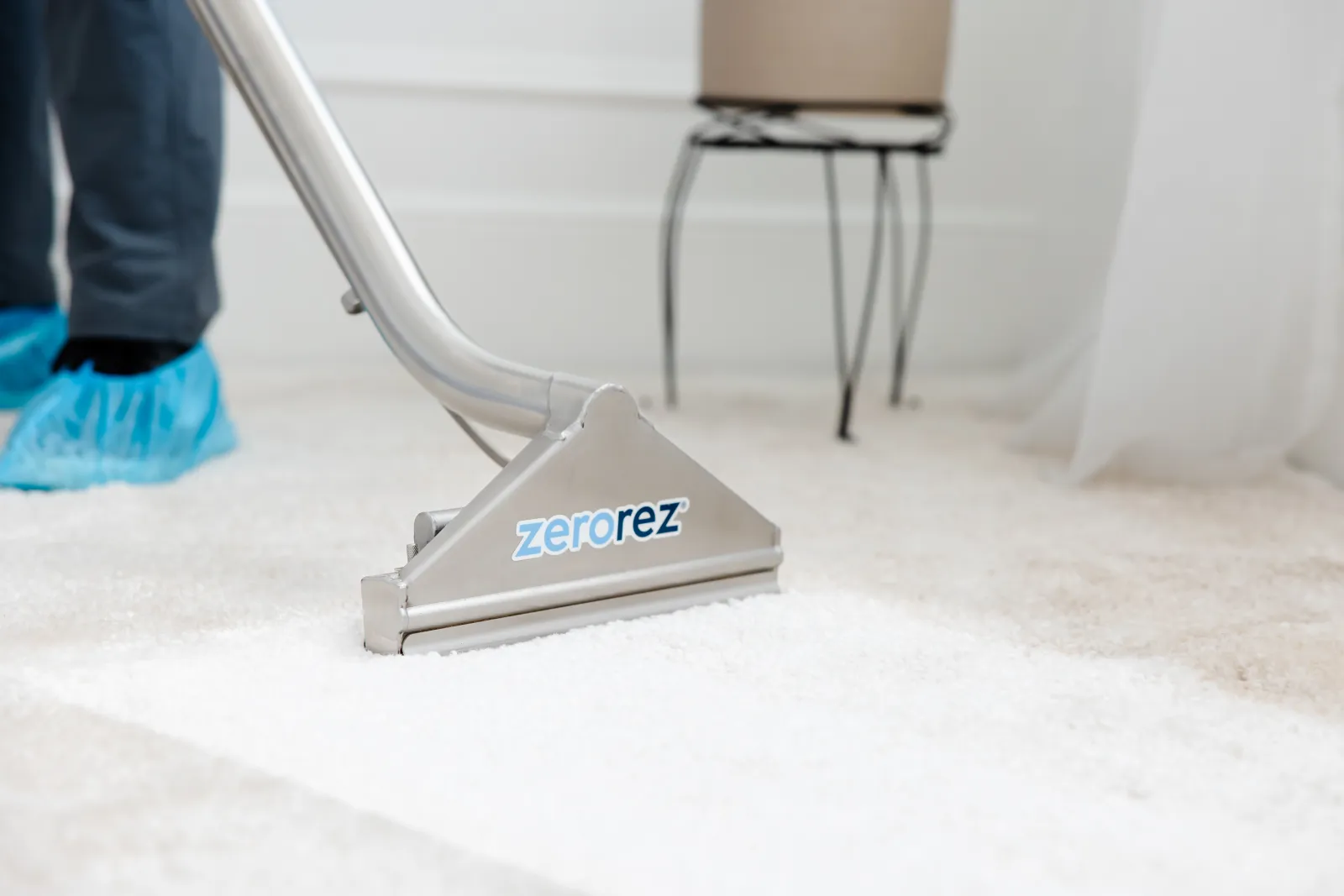
Keep Carpet Beetles Away From Your Carpet by Hiring Us
Zerorez® uses the hot water extraction method to deep clean carpets and eliminate much of the food sources hiding in your carpets for carpet beetles.
We have several branches in the United States of America, so you can contact the nearest Zerorez branch for exceptional and affordable carpet cleaning services. Schedule your cleaning online today!
